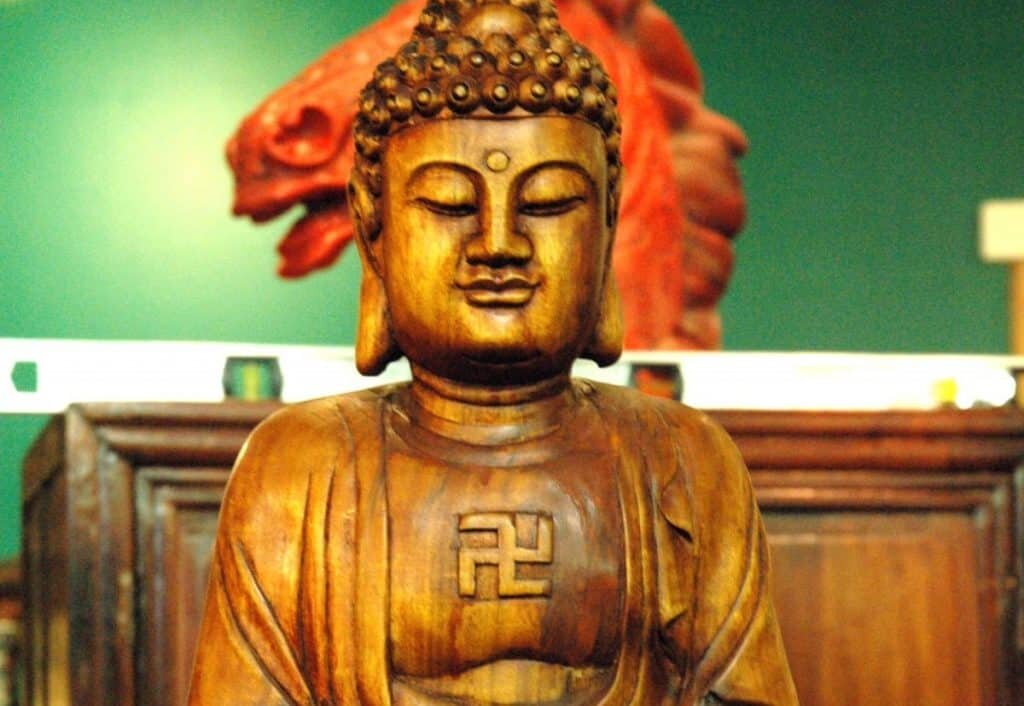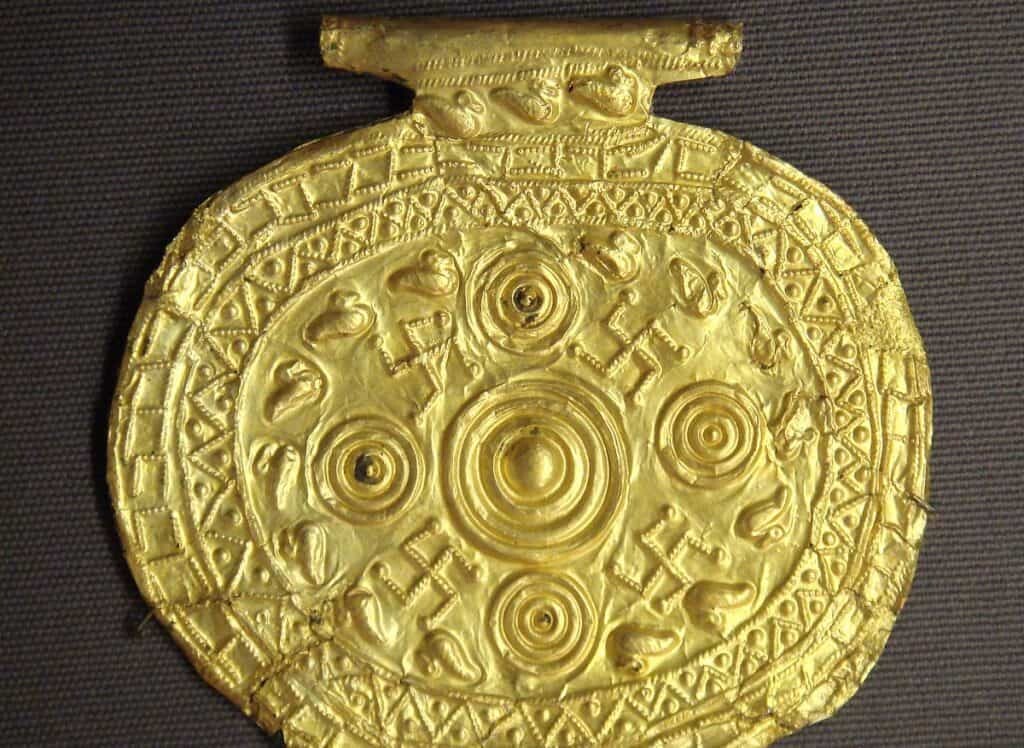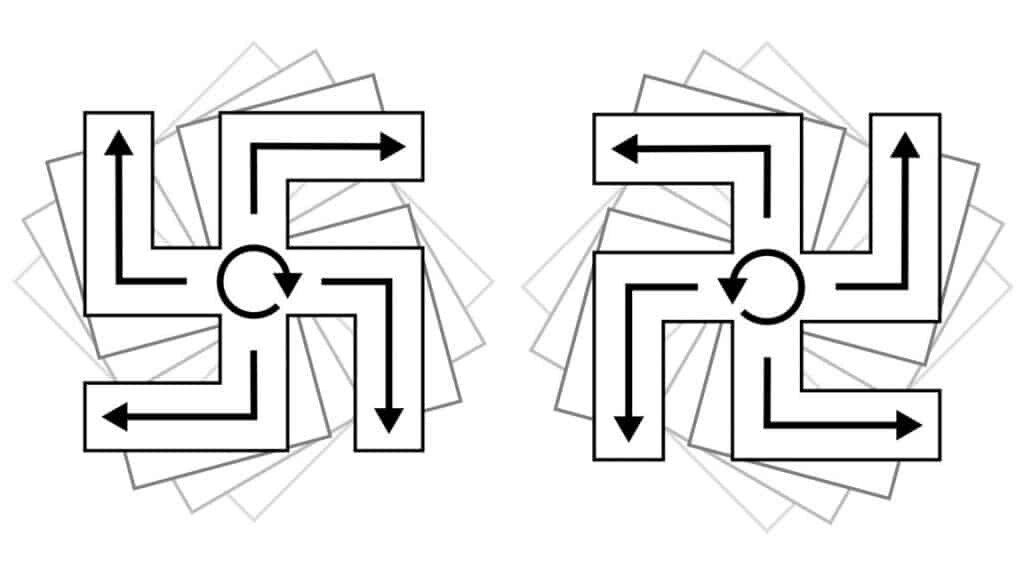The history of the swastika is an ancient one with roots in many cultures. In its most ancient form, it represented the life-giving sun. Before the early 1900s, one could even find the symbol in advertisements. People across the world knew it to mean good luck and fortune. But, before WWII began, the German Nationalist movements and, later, the Nazis adopted the motif. Overnight, the once-beloved symbol became a representation of hate and evil. This is the story of the swastika’s fall from grace.

The Neolithic Image
The image is as old as most of the oldest civilizations. Archaeologists have found the earliest clear examples from the Neolithic period, dating back to approximately 6,000 B.C. Some sources say the symbol is as old as 12,000 B.C. – 10,000 B.C., but experts are uncertain if those designs were related to the modern-day swastika. Some of the first similar designs come from the Indus Valley (India), England, Bulgaria, Italy, Africa, and elsewhere in European, Middle Eastern, and Asian regions. Later, the images appear across many more areas and cultures around the globe, including Scandinavia and the Americas.
What Did the Swastika Mean?
The word swastika comes from the Sanskrit word svastika and means a lucky or auspicious thing. There are many other names for this symbol depending on location. Gammadion cross, Hakenkreuz, and fylfot are just a few.
The earliest history of the swastika is still in dispute, and there are numerous theories about its original meaning. However, most experts agree that in ancient days it represented the sun or sun gods. It was common for ancient cultures to revere the sun for its life-giving ability. The sun itself was a symbol of good luck, fortune, life, energy, and the universe. The symbol, as a representation of the sun, once meant all of these things. It still does in some eastern cultures that were less affected by the holocaust.
Related: Operation Pastorius: Hitler’s Attempt to Blow Up America
For the Hindus and Buddhists, the symbol is still very much alive. It represents different concepts. The design still exists in many places such as on buildings, temples, houses, and on almost all rickshaws for protection. In Hinduism the svastika symbolizes the four faces of Brahma or God the Creator; the faces look out in the four directions. It also symbolizes the spiral of our universe. Each arm curves around toward the center or point of origin, because all things go back to their source – their creator. Looking deeper, the symbol has more religious implications and stands for God, eternity, the universe, and energy.


Left and Right Facing Versions
Across the world, the svastika images face both left or right. Buddhists commonly use the left-facing version called the sauvastika. Hindus often use the right-facing version, however, both groups use the opposite versions as well. The left-facing symbol has nothing to do with evil, and any such association is a misunderstanding of East Asian religious concepts. So after thousands of years, how did the beautiful and poetic meaning of a religious symbol change from goodness to evil so quickly?

Hooked Cross Symbols in Troy
The history of the swastika took a sharp turn with the help of a late 19th-century German archaeologist by the name of Heinrich Schliemann. He discovered the ancient city of Troy in what is now Turkey. At the site, Schliemann found examples of the symbol. They were similar to those found on ancient pottery that archaeologists had discovered in Germany. His research led him to believe that the geographic disbursement of the symbol was a result of the migration of Proto-Indo populations of Greeks, Indo-Iranians, and Germanic tribes into Europe. Based on this finding, Persians and Indians (Aryans) are the original settlers of the Germanic region. Thus, Schliemann “theorized that the swastika was a ‘significant religious symbol of our [German] remote ancestors'” (Holocaust Encyclopedia).
Following Schliemann’s discoveries, Germans began to link the symbol to their deeply rooted Germanic/Aryan heritage. The nationalist groups that were forming at that time aimed to keep their heritage strong and pure. Hence, the German Hakenkreuz became a popular symbol of the nationalist movement. It represented a strong identity with their national heritage. This is the point at which the auspicious meaning of the swastika began to change. As the nationalist cause developed further, people began to associate the Hakenkreuz with racial superiority and racism. Additionally, the theories regarding their heritage and “race” justified more hatred for the Jews. That hatred began to fully ignite after WWI.
Heritage or Hate?
In 1921 Adolf Hitler took control of one of the nationalist groups, called the German Workers’ Party. He renamed it the National Socialist German Workers’ Party, also known as the Nazis. By then, strong anti-semitic sentiments had emerged. Thus, one of the primary goals of the organization was to establish laws that would ban citizenship for Jews. Hitler realized also that the organization needed a flag that could attract people and unify its members under one principle. He needed a Nazi emblem.
Although many people submitted examples of possible flag designs, many of them used a white flag, similar to the old flag. Hitler did not want any association with the old flag and philosophies. So he, himself, created the Nazi flag using red, black, and white. The flag was red. The circle in the middle was white, and the Hakenkreuz overlaying the white was black.
The Holocaust Teacher Resource website explains:
Hitler had a convenient but spurious reason for choosing the Hakenkreuz or hooked cross. It had been used by the Aryan nomads of India in the Second Millennium B.C. In Nazi theory, the Aryans were the Germans ancestors, and Hitler concluded that the swastika had been ‘eternally anti-Semitic.’

The Nazi Emblem
Hitler expressed in Mein Kampf that the emblem “is the mission of the struggle for the victory of the Aryan man.” However, as it turned out, what the Nazis meant by “victory” is the complete extermination of the Jews. They also aimed to dominate, conquer, and expand their geographic foothold. The new red, black and white logo was used by the Nazis on their propaganda, armbands, military badges, and within the government. It instilled both pride and unity for the Germans and fear and desperation for the Jews.
Once WWII began, western countries began to stop using the blessed symbol. And after WWII, the sight of a German emblem incited such strong sentiment that it and/or the flag was banned in many western countries.
All Things Come to an End
Perhaps no time in history can we find a deeply rooted and widespread symbol go from universal goodness to absolute evil seemingly overnight. The vision of one man to eradicate an entire race of people was carried out and supported by virtually a whole nation. Hitler’s ability to unite millions of people under the German flag would lead to unspeakable atrocities that are still deeply palpable, especially for the Holocaust survivors and their offspring. Never again will the beloved design be an international symbol of auspiciousness. Sadly, the swastika is now synonymous with Nazi hatred.
References:
Holocaust Teacher Resource Center
U.S. Holocaust Memorial Museum
Encyclopaedia Britannica
BBC
Wikipedia
Nazism